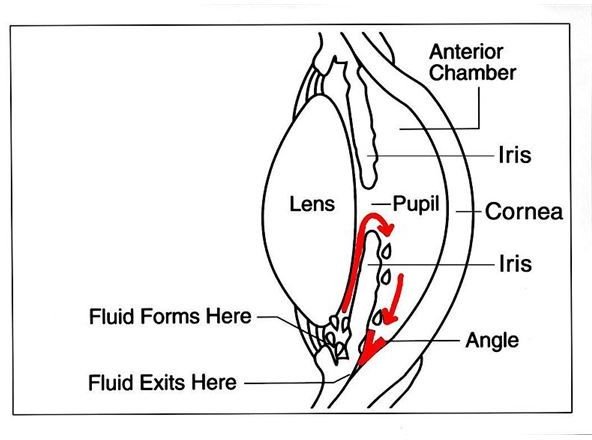Acute Angle Closure Glaucoma
Glaucoma comes in several forms, including acute angle closure. This form of glaucoma is characterized by a sudden or rapid-onset increase in pressure in the eye, known as intraocular pressure (IOP). Immediate treatment can prevent vision loss and damage to the optic nerve. This form of glaucoma may be mistaken for chronic open-angle glaucoma, so its important to seek immediate medical attention and be very specific about the details of the symptoms and onset.
Causes
The acute angle closure form of glaucoma is caused by one of two things. Either the iris is pushed forward or it is pulled forward against the trabecular meshwork. Both of these circumstances cause the anterior chamber to close so aqueous humor drainage stops. This causes the fluid to become trapped in the eye and results in increasing pressure.
Signs and symptoms
The symptoms include blurred vision, pressure, pain/headache and nausea. Pupil dilation may also occur.
Treatment
This condition must be treated by an ophthalmologist. Treatment usually will consist of a laser iridotomy, but if there is a problem with accessing the iris a surgical iridecotmy will be performed instead. Though achieved through different means, both consist of making an incision in the iris so the fluid may drain.
Risk factors
Though less than 10 percent of U.S. cases of glaucoma are the angle-closure form, people of certain ethnicities or who have certain physical considerations are at higher risk. Certain drugs are also thought to increase the risk factor.
Ethnicity: The ethnic risks for acute angle closure glaucoma is approximately 1 in 1000 for Caucasians; 1 in 100 for Hispanics and Asians; 2-4 in 100 for Inuits.
Physical: Physical risk factors revolve around things such as the width and depth of the anterior chamber, being far-sighted (hyperopia), size of eyes, age (elderly) and gender (female).
Drugs: Certain drugs may exacerbate or cause angle-closure glaucoma. According to a case study published with the National Institute of Health, the types of drugs involved include:
- Adrenergic agonists
- Anticoagulants
- Anti-cholinergics
- Cholinergics
- H1 and H2 receptor antagonists
- Selective serotonin reuptake inhibitors
- Sulpha-based drugs
- Tricyclic and tetra cyclic antidepressants
Anterior Chamber of Eye

Image Credit:
Illustration of an anterior chamber glaucoma. NIH Gov. EDA02. Wikimedia commons. Public Domain. Wikimedia Commons. https://commons.wikimedia.org/wiki/File:Flow_of_aqueous_humour_eye_EDA02.JPG
Resources:
Eye Health Center: Acute Angle-Closure Glaucoma (overview). Reviewed November 18, 2005. WebMD. https://www.webmd.com/eye-health/acute-angle-closure-glaucoma
BMC Ophthalmology. Citalopram associated with cute angle-closure glaucoma: case report. Robert Croos, Srinivasa Thirumalai, Sabit Hassan, and Jane Da Roza Davis. Received February 3, 2005; Accepted October 4, 2005. https://www.ncbi.nlm.nih.gov/pmc/articles/PMC1262727/
Acute Angle Closure Glaucoma. Handbook of Ocular Disease Management. https://www.revoptom.com/handbook/sect4d.htm